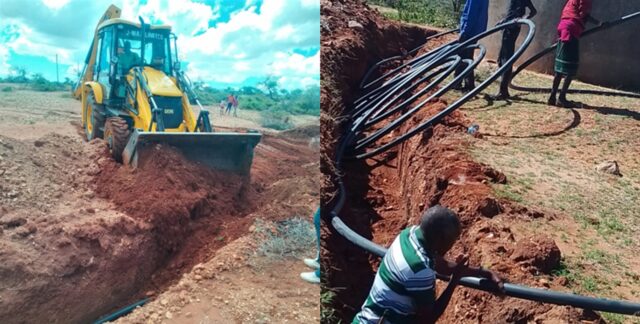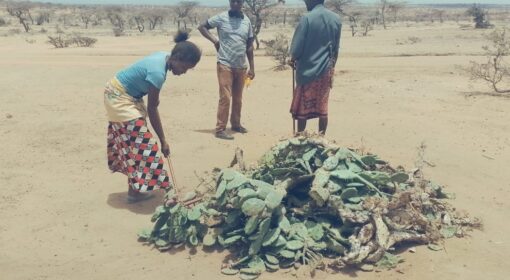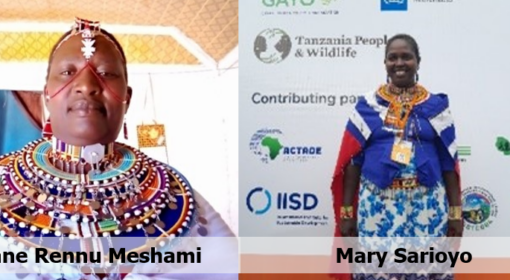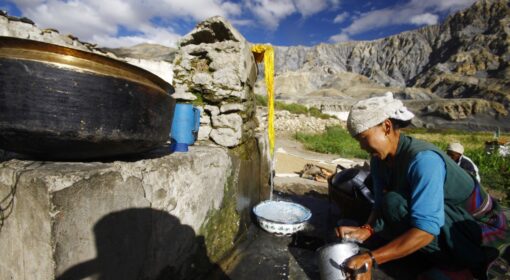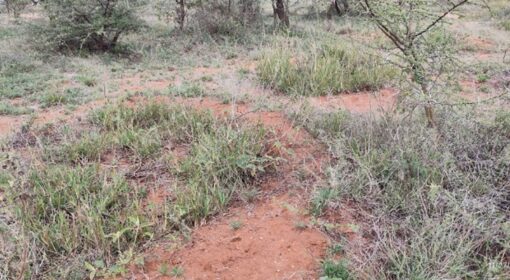By Laura van Santen, Nancy Kadenyi, Theophilus Kioko, James Mema
This blog is part of a dossier on locally-led adaptation, featuring insights and lessons from the Reversing the Flow (RtF) program. RtF empowers communities in Bangladesh, Burkina Faso, Ethiopia, Kenya, and Sudan to build climate resilience through direct funding and a community-driven, landscape approach.
The NGO IMPACT is facilitating RtF in Kenya. Through IMPACT’s RESTORE program, communities like Koija in Kenya are designing and implementing their own solutions to build climate resilience.
In Koija, access to clean water was a daily struggle. The community relied on a sand dam, but the water was often contaminated and dried up during the dry season. The area was also frequented by wildlife, making it unsafe, especially for women fetching water.
That changed when Thomas Neiputari, the community chairman, attended an IMPACT seminar and learned about RESTORE’s direct funding approach. When he spoke about the water shortage in his community, he was informed about the possibility of launching this project through direct funding. All that was needed was a good idea. Since the nearby Tiamamut community had an abundance of water, the idea arose to use their borehole and lay a water pipeline.
With support from RESTORE, Koija received 4 million KES (around 26.400 euros), deposited directly into their Community Management Committee’s account. Of this, 3.8 million KES was used to lay the pipeline, build a water point, and install a plastic storage tank.
Two community members were trained in plumbing for basic repairs, ensuring local ownership and reducing dependence on external experts. For a small monthly fee, households can now access clean water, with the funds used for maintenance. “We did everything ourselves,” says Thomas proudly. By doing everything themselves, the community saw what is possible when they work together.
The clean water from the pipeline is a huge improvement. Women like Agnes and Anne no longer have to walk long distances to fetch water, saving them time and energy. Fetching water is traditionally a task for women in Kenya. “Now I’m not getting tired from fetching water, and it saves time for other activities,” says Agnes.
Women played an important role in the project, says Agnes. “From the idea phase on, we were highly involved,” she says. During the implementation, the women helped collect stones for the concrete slab on which the tank stands. Although they also wanted to help dig the trench for the pipeline, they couldn’t dig deep enough, so an excavator machine was used.
Working together on this project has brought the community closer. “When we come together, we are able to do something big,” says Agnes proudly. Moreover, it saves time; many hands make light work.
The project marks a strong first step, but Koija’s ambitions go further. With most of the funds spent on the initial pipeline, they still hope to:
- Replace the plastic tank with a sturdy concrete one to withstand elephants.
- Add a livestock trough.
- Extend the pipeline to a ranger camp and nearby schools.
Thomas estimates this will require another 5.5 million KES. “RESTORE saved us, and we think they’ll do more to help us,” concludes Thomas.
